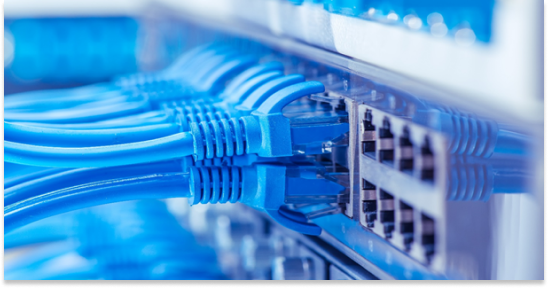Fixed Wireless Internet vs. Fiber Internet

Fixed Wireless Internet vs. Fiber Internet
Both fiber internet and fixed wireless internet provide fast broadband speeds to homes and businesses, but they do so in two different ways. These different options both deliver good speeds and coverage, but people often choose fixed wireless internet when they don’t have access to fiber or want to back up a fiber connection with a wireless failover connection. To understand the differences, let’s compare fixed wireless internet vs. fiber internet service.
What’s the difference between fixed wireless internet and fiber internet?
Fixed wireless internet is a mobile data connection installed on a Wi-Fi router. Mobile data networks, like 4G LTE and 5G, connect users to the internet via local cell towers. A fixed wireless connection transmits data to and from these towers over the same radio frequency bands as cell phones, but it’s much stronger than a cell phone or a mobile hotspot connection.
Fiber internet, on the other hand, uses light signals to send data back and forth over fiber optic cables. While the speed of light is slower in a cable, it’s still faster than the speed of radio waves, which is why fiber internet has a higher maximum speed than all wireless options.
Fixed wireless internet vs. fiber internet speeds
Fiber internet has higher maximum download and upload speeds than fixed wireless internet. The fiber provider Verizon Fios, for example, has an average download speed of more than 70 Mbps, versus just over 50 Mbps for 5G and just under 30 Mbps for 4G LTE. Fiber also has an average upload speed of 50 Mbps, versus around 15 Mbps for 5G and 4G LTE.
Latency, or “ping” time, is the number of milliseconds it takes for a request (like a request to download or upload a file) to travel back and forth between your device and the server. Fiber has a slightly lower ping than wireless internet. Verizon Fios has an average ping time of under 25 milliseconds, while 5G and 4G LTE networks have an average ping of about 35 milliseconds.
Fixed wireless internet or fiber internet coverage
Despite the higher speeds of fiber internet, people often choose fixed wireless internet because it’s available in more places – including rural and remote areas. AT&T, Verizon, T-Mobile, and Sprint 4G LTE all cover more than 90% of Americans and T-Mobile 5G already covers 200 million people. Verizon Fios, the largest fiber provider in the US, only covers 35 million people.
Wireless Internet vs. fiber reliability
While fiber internet is fast, it’s vulnerable to network maintenance, traffic accidents, extreme weather, and sabotage in a way that wireless internet connections aren’t vulnerable. While network maintenance and very extreme weather affect cell towers as well, wireless connections are usually harder to sabotage and more stable during disasters. For this reason, many businesses and emergency services use fixed wireless internet as a failover internet option.
Failover internet is a backup internet connection that kicks in when a primary internet connection like fiber fails. A failover keeps organizations online at all times, so they don’t lose access to essential web applications like online payment and management systems.
Get fixed wireless internet for your home or business
It isn’t always easy to find an internet option that’s fast and reliable enough for your home or business. Fixed wireless internet is a great option for people living in areas without wired internet coverage, as well as those looking for a reliable primary or failover option.
Check if we offer coverage in your area or give us a call at 866-439-6630 to discover fixed 5G and 4G LTE options in your area.





